Anchor types
Weight, chain size and shape. These are the three key elements of an anchor line. We can determine the chain weight and size on the basis of our boat size and these features are usually defined by the shipbuilder.
As for shape, on the contrary, it depends on the sea bottom type.
Of course, we can’t have an anchor stock for any kind of bottom but we can choose a main anchor, one or two additional ones.
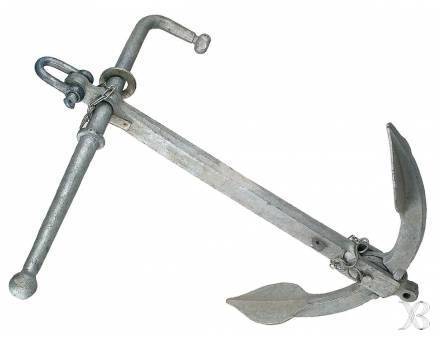
Anchors can be divided into four big groups: grapnels, plough anchors, patent anchors and stock anchors.
Stock anchors, of which we know
the classic admiralty one, have disappeared from boats because of their encumbrance and low manageability. Consisting of two flukes and a shaft, these anchors have maybe had the best grip on every sea bottom. Even on seagrass, because flukes can squeeze in the thick sea bottom vegetation.
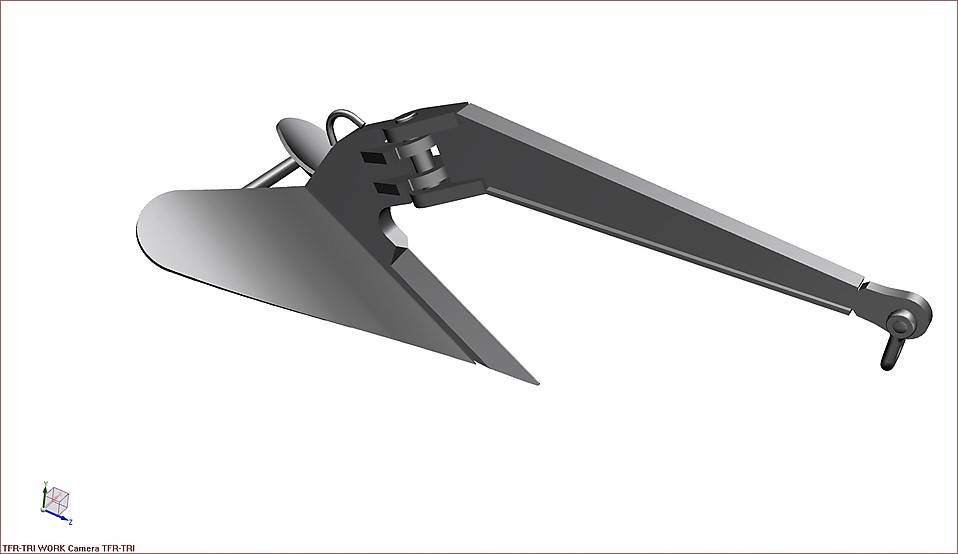
Heavy and bulky, with a high probability to get stuck, they have completely disappeared from boats.
Vice versa, the most common anchors are the plough ones. CQR, Bruce and Delta are the most popular anchors because they are good for any kind of sea bottom.
Among them, the most efficient one is CQR, designed by an English mathematician, Sir Geoffrey Ingram Taylor, in 1933. Its name is the contraction of “secure”. Like all the other anchors of this category, it is named after its particular plough shape. When it reaches the sea bottom, it bends to let the fluke enter into every bottom, except for seaweeds, where it tends to slip. It has an excellent grip.
CQR
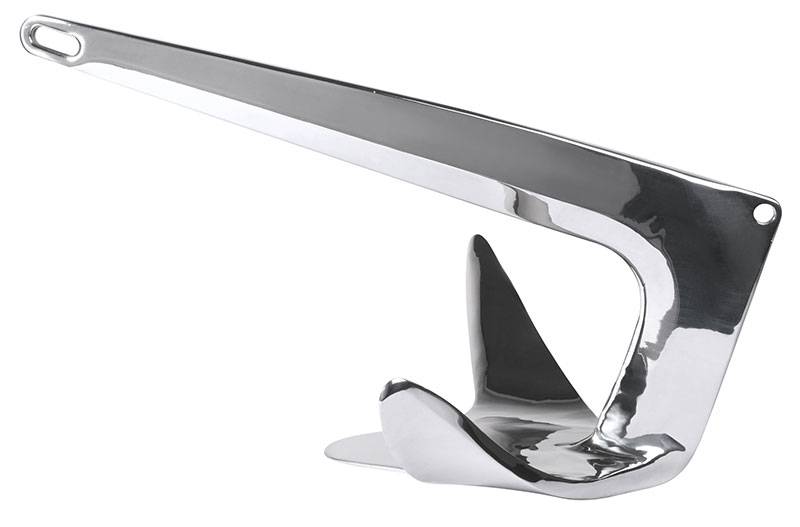
is very expensive. There are some imitations on the market but we suggest you to avoid them.
CQR’ s evolutions, like Bruce, Delta, Bugel and Ultranchor are a different matter. They are plough anchors, too, but with no junction between flukes and spindle. They are generally efficient, except for bottoms covered with vegetation.
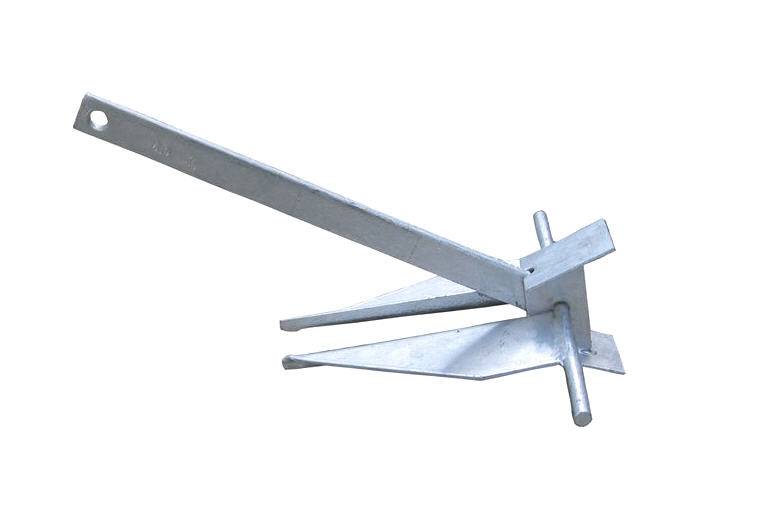
Patent anchors form a large family. Danforth, Britany, Fob, Hall anchors, just to mention the most popular ones, are particularly appreciated for their practicality. They don’t have the same weight/grip ratio than the plough anchors but they are very efficient on all bottoms, except for those ones covered with vegetation. Moreover, they are very handy and can be easily stowed into locker or a bilge.
Finally, grapnel anchors can’t be considered for an anchor line on a pleasure craft, not even if small. Especially in resealable models, they can be very efficient for tender and rubber boats or as additional anchors to improve grip, but not in hard weather conditions.
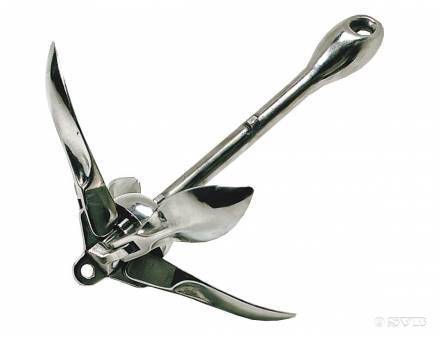
In general, we can say that the best solution is a plough anchor, while patent anchors are good as additional anchors.
Both anchor and chain’s weight and length should be considered carefully.
According to an ancient saying, you need ” one anchor pound for each boat foot“. So, for a 40-foot-boat with a medium displacement, CQR’s weight should be about 16 Kg ( 18 Kg and 21 Kg in the case of a Bruce and a Danforth anchor).
For example, on a 40-foot-boat with a medium displacement, a good equipment can be a CQR or another plough anchor, as main anchor, of about 18 Kg with 50 metres of a 8-millimeter-chain, and an additional patent anchor of 20 Kg with 20 metres of a 8-millimeter-chain.

























5 Responses
Not very responsible publishing an article in 2016 that uses information that was only relevant 40 years ago!! ALL the anchors described in the article have been long since replaced by more modern anchors. Suggesting that the CQR is one of the most efficient anchors just highlights that you pull this article from several decades ago! its been nearly 40 years since much better and more efficient anchors than the CQR have been introduced.
Please don’t rehash 40 year old data as current advice for boaters. It’s simply irresponsible.
Ehr….an article on anchors published on August 7, 2019, carries a comment pisted in April 16, 2017???????
By the wayI stick to the CQR choice and was never sorry for it.
While appreciating the efforts od designers and MARKETERS of “hi-tech”(?) new anchors, IMHO theyr cost-to-performance is nothing spectacular.
Article was changed and took new date, why cancel old comment?
I don’t know if I can add pictures or not but I ran accross an anchor I can’t find another like it. It is like a cylindrical tube with a plow tine sticking out from the center on either side.
If someone recognizes it by description can you tell me what type of conditions it is meant for? Thank you
That sounds like a reef anchor but without pictures it’s hard to say.